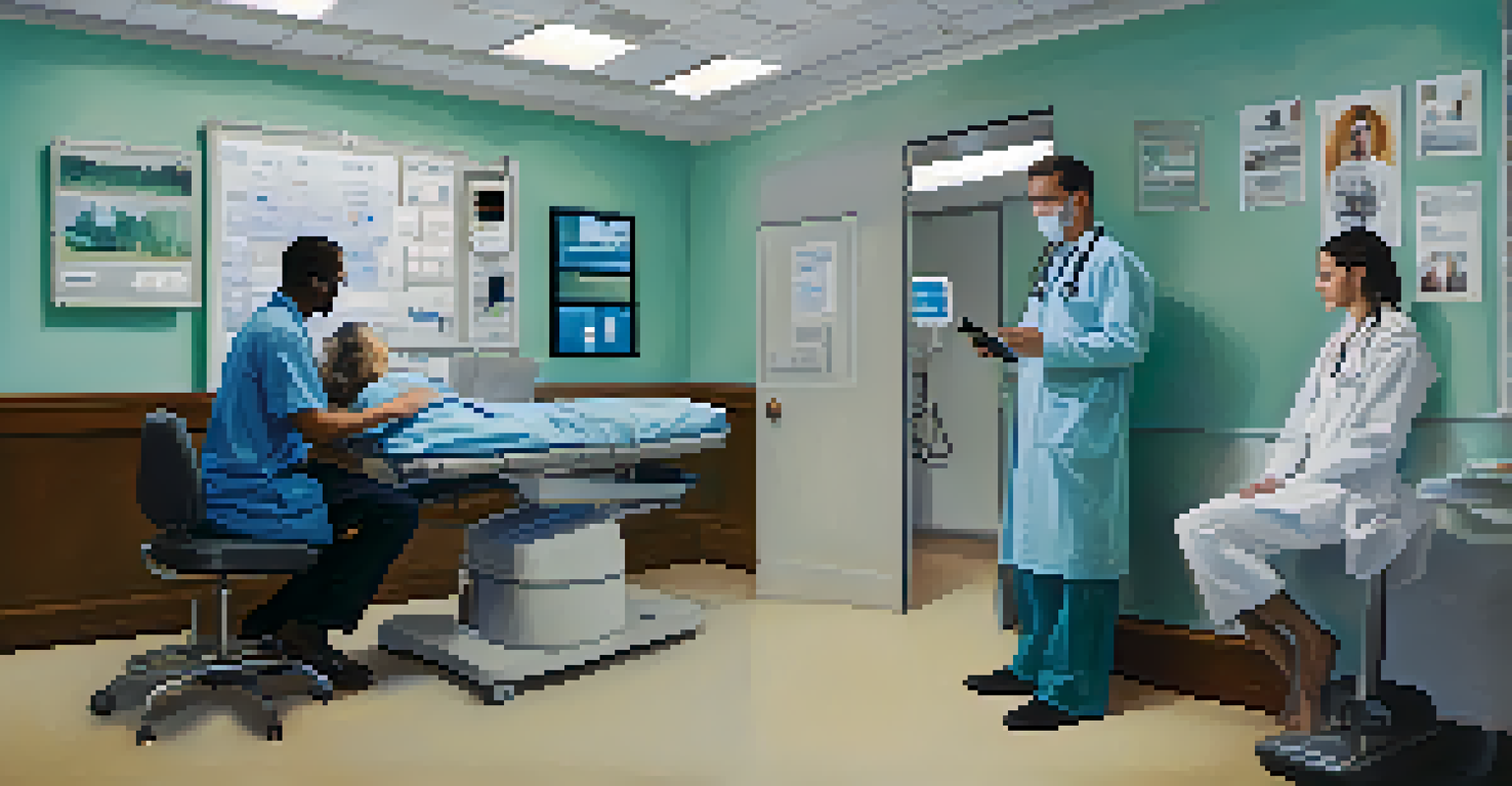Telemedicine vs. Traditional Healthcare: Pros and Cons Explained

Understanding Telemedicine: What Is It Really?
Telemedicine refers to the practice of providing healthcare remotely, often through video calls or mobile apps. This approach has gained momentum, especially during the pandemic, allowing patients to connect with healthcare providers without the need for in-person visits. Think of it as having a doctor's office right in your pocket, making healthcare more accessible.
Telemedicine is a tool. It's not a replacement for the doctor-patient relationship, but it can enhance it.
One of the key benefits of telemedicine is convenience. Patients can consult with doctors from the comfort of their homes, saving time and travel costs. This can be especially helpful for those living in rural areas or for individuals with mobility issues, ensuring they receive the care they need without the hassle.
However, telemedicine isn't a one-size-fits-all solution. Some medical conditions require physical examinations or hands-on procedures that can't be done virtually. Understanding the scope of telemedicine is crucial to leveraging its benefits effectively.
Traditional Healthcare: A Tried-and-True Method
Traditional healthcare involves face-to-face interactions between patients and healthcare providers. This conventional model has been the standard for decades, offering a personal touch that many patients appreciate. It's like visiting a trusted friend who knows your medical history and can provide tailored care.

One significant advantage of traditional healthcare is the ability to conduct comprehensive physical exams. Doctors can identify issues that might not be apparent through a screen, such as listening to heartbeats or performing blood tests. This hands-on approach can lead to more accurate diagnoses and treatment plans.
Telemedicine Offers Convenience
Telemedicine allows patients to consult healthcare providers from home, saving time and making care more accessible.
However, traditional healthcare can sometimes come with downsides, like long wait times and the need for travel. Patients often face scheduling challenges, which can delay care. Balancing these aspects with the advantages of telemedicine is essential for modern healthcare.
Pros of Telemedicine: Convenience and Accessibility
One of the most significant pros of telemedicine is the convenience it offers. Patients can schedule appointments that fit their busy lives, eliminating the need to take time off work or arrange childcare. It's as simple as logging on and having a conversation with a doctor—no waiting room required.
The future of healthcare is not in telemedicine or traditional care; it’s in the integration of both.
Additionally, telemedicine increases accessibility for individuals living in remote areas. For those who may have difficulty reaching a healthcare facility, virtual visits can be a game changer. This opens up a world of options, ensuring that everyone has the opportunity to receive medical advice and care.
Moreover, telemedicine can lead to quicker follow-ups and ongoing care management. Patients can easily check in with their healthcare providers, facilitating better communication and continuity of care. This can be particularly beneficial for managing chronic conditions.
Cons of Telemedicine: Limitations and Challenges
Despite its many benefits, telemedicine does have limitations. Certain medical issues necessitate in-person examinations, and some patients may feel that a virtual visit lacks the thoroughness of a traditional appointment. This can lead to concerns about receiving adequate care.
Technical challenges can also arise, such as poor internet connections or unfamiliarity with digital platforms. Not everyone is comfortable navigating technology, which can create barriers to accessing telemedicine services. This highlights the need for user-friendly solutions and support.
Traditional Care Provides Personal Touch
Face-to-face interactions in traditional healthcare foster trust and allow for thorough physical examinations.
Moreover, telemedicine may not be suitable for all demographics, particularly older adults who might not be as tech-savvy. Ensuring that all patient populations can benefit from telemedicine is an ongoing challenge for healthcare providers.
Pros of Traditional Healthcare: Personal Touch and Thoroughness
The personal connection between patients and providers is a hallmark of traditional healthcare. Many patients find comfort in face-to-face interactions, which can foster trust and open communication. This personal touch can significantly enhance the patient experience.
In-person visits allow for a comprehensive evaluation of health concerns. Doctors can perform physical assessments and establish a rapport with patients, which can lead to more accurate diagnoses. This thoroughness is often cited as a reason many prefer traditional healthcare.
Moreover, traditional healthcare can provide immediate access to diagnostic tools and treatments. If a patient requires blood work or imaging, it can often be done on the spot, streamlining the process and minimizing delays in care.
Cons of Traditional Healthcare: Time and Accessibility Issues
While traditional healthcare has its merits, it also comes with drawbacks. Long wait times for appointments can be frustrating for patients, especially when they need timely care. This can lead to unnecessary anxiety and potential health complications if issues are not addressed promptly.
Additionally, travel requirements can be a significant hurdle. Patients living in rural or underserved areas may have to drive long distances to see a doctor, which can be both time-consuming and costly. This can deter individuals from seeking necessary medical attention.
Hybrid Model is the Future
The future of healthcare likely lies in blending telemedicine and traditional care to enhance accessibility and personal connection.
Finally, traditional healthcare may not always accommodate busy schedules. With limited appointment availability, patients might find it challenging to secure a time that works for them, further complicating their access to care.
The Future of Healthcare: Blending Telemedicine and Traditional Care
The future of healthcare likely lies in a hybrid model that combines the best of telemedicine and traditional care. By integrating both methods, patients can receive comprehensive care tailored to their needs. This approach can enhance accessibility while maintaining the personal touch that many value in healthcare.
As technology continues to evolve, we can anticipate advancements that will improve the telemedicine experience. This may include better platforms for virtual visits and more robust training for both providers and patients. Such developments could bridge the gap between traditional and telehealth services.

Ultimately, an effective healthcare system will recognize that one size does not fit all. By leveraging the strengths of both telemedicine and traditional healthcare, we can create a more inclusive and effective model for patients everywhere.